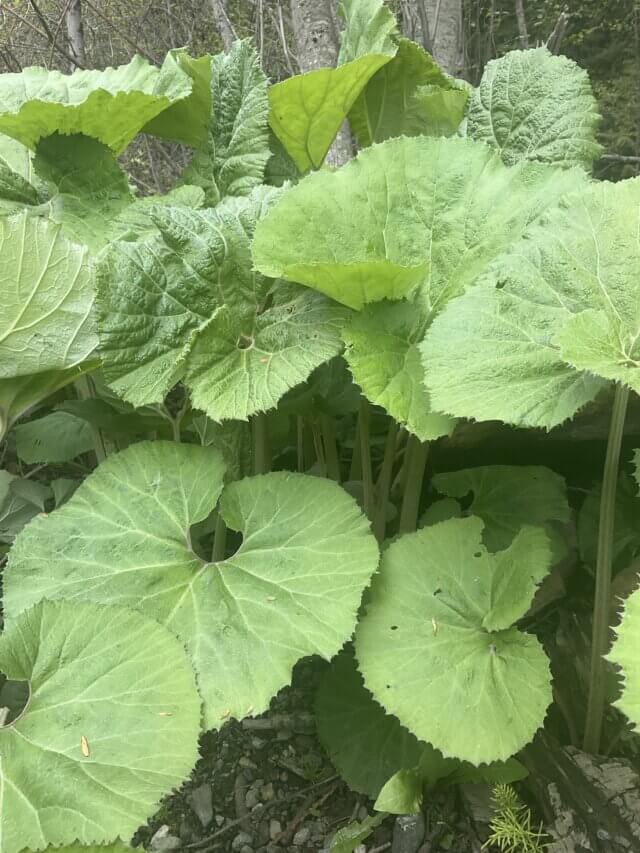Petasites japonica
Description
- Perennial, herbaceous plant with an almost tropical appearance that can grow up to 6 feet tall
- Similar in appearance to rhubarb
- Simple, kidney-shaped leaves can grow up to 3 ft across, with dense hairs on the underside
- Single leaves grown on ridged, hollow stems
- Flowers are white to pink and grow on a spike that emerges before leaves in the late winter/early spring
- Native to Asia, likely brought to North America as an ornamental
- Its scientific name comes from the Greek word petasos, meaning a wide-brimmed hat
- Found in shaded areas with moist soil, including river banks, shorelines, wetlands, and ditches
Consequences of invasion
- Spreads easily by rhizomes or rhizome fragments and sometimes through seed
- Large leaves can shade and outcompete native vegetation, leaving bare ground beneath which can lead to increased erosion.
Status in the CKISS region
Currently classified as Eradicate in the region.
- It is present in the region with limited distribution, so eradication is feasible
- CKISS is taking steps to monitor and manage Japanese butterbur
- To learn more about how CKISS classifies and manages invasive species, see our Invasive Species Priority Lists page.
Integrated pest management options
Mechanical Treatment:
- Can be time-consuming and labor-intensive with large infestations
- Pull or dig up plants when the soil is moist to control small infestations, ensuring to dig up all rhizome material
Additional resources


